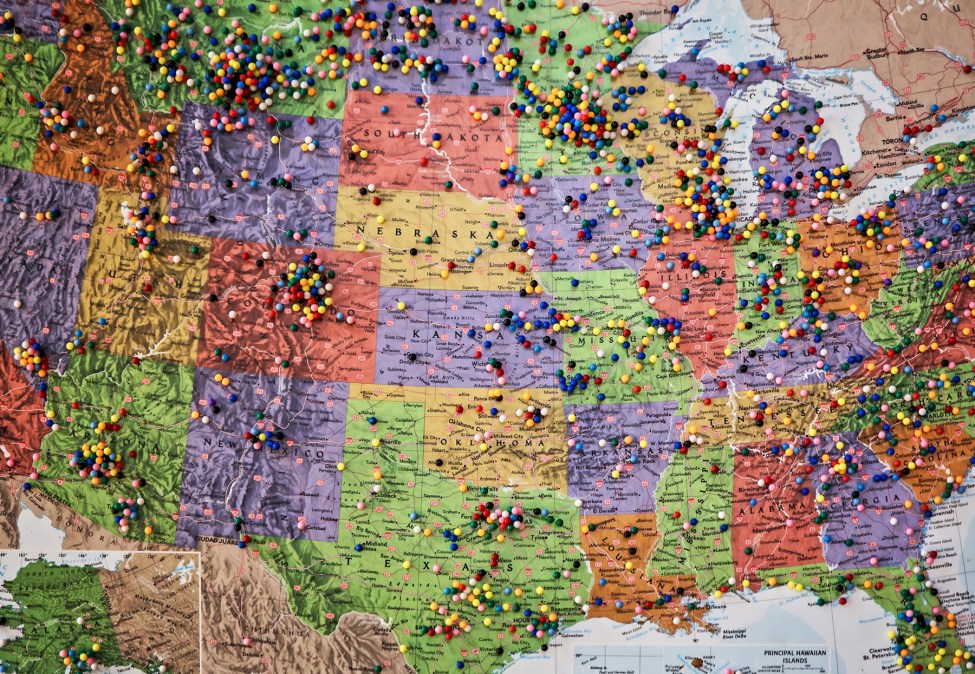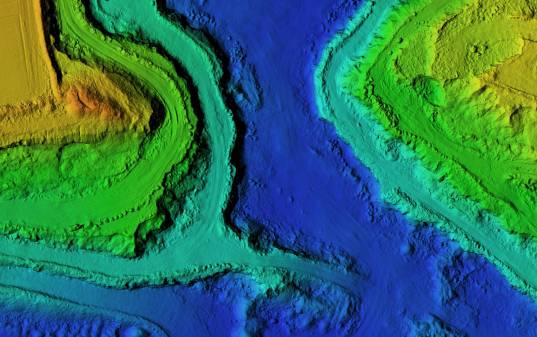Report card: State, local geospatial leaders need better governance, infrastructure to collaborate across agencies

Despite making progress in key areas over the last several years, geospatial leaders across states, localities and tribes are in need of more organized governance models and infrastructure to enable collaboration across agencies, a recent report card from the Coalition of Geospatial Organizations said.
The 2024 Assessment of the U.S. National Spatial Data Infrastructure, which the Coalition of Geospatial Organizations (COGO) released Oct. 21, evaluated geospatial information systems data and infrastructure, documenting achievements and challenges across the public tech sector on the federal, state, local and tribal levels. It found that as a whole, the condition of GIS data — which helps to inform decisions about public works — and the infrastructure to enable the sector’s work have largely remained unchanged from 2018. The assessment assigned the national status of spatial data and its infrastructure a grade of C-, which is also the grade it received in the group’s last assessment in 2018.
As a whole, the report evaluated the technology, policies and processes, people and funding that power the geospatial data and the digital map layers they create to support real-time decision-making, infrastructure management, investments and the delivery of critical government services.
The assessment said the reasons for the static grade since 2018 included a lack of progress in the key areas of governance and collaboration to enable data sharing among public and private sector GIS professionals and companies.
According to Cy Smith, secretary of COGO and the Massachusetts state geographic information officer, a large part of this grade stems from the absence of a nationalized GIS data-sharing mechanism. For example, he noted the lack of a national database for land parcels and addresses, which might allow county assessor’s offices to more easily share that information with other agencies or groups involved in regional planning and policy-making decisions.
“We don’t have a national address database, really. We have the beginnings of that, but that data comes from city and county planning offices,” Smith told StateScoop. “That data needs to come from those authoritative providers and be pushed up to the state government and up to the national government, and there’s not any mechanism to make that happen.”
Smith also said that by way of national data standards, which would help to make the policies governing the collection and use of geospatial data more consistent across the country, the sector has “stepped back in progress.” Requirements laid out in the Geospatial Data Act of 2018 were interpreted by the federal government in 2023 to invalidate any standards codified before the act was passed, essentially wiping out years’ worth of progress by the Federal Geographic Data Committee, Smith said.
“When we look at that from an assessment standpoint, or from a report card standpoint, that’s a step back. So there have been a couple of things like that where we’ve basically taken a step back overall. We’re not funding this well enough overall, the governance isn’t there, and we’ve taken a step back on standards,” Smith said. “It’s like, well, we can’t really raise the grade overall on this.”
The Geospatial Data Act also legally formalized and established multiple geospatial entities and policies, including the NSDI, to ensure access to and sharing of geospatial data.
On a more granular level, the report also evaluated eight key theme areas for the types of data that geospatial professionals work with, and assigned grades both cumulatively and singularly: addresses, cadastral, elevation, geodetic control, governmental units, hydrography, orthoimagery and transportation. Only two of the data themes — elevation and geodetic control — received improved grades since 2018. But the cumulative score for the NSDI data themes increased from a B- to a B since 2018.
“Critical investments in resources, support and significant cross-agency activities are contributing factors. In fact, important progress in collaborations and partnerships was a common positive characteristic across the eight work groups, while lack of standards and funding uncertainty were two of the most significant shortcomings,” the report said.
While it has been six years since the last NSDI assessment, Smith added that COGO hopes to begin releasing reports every four years, with the next slated for 2027.
Before then, a new geospatial group will begin running pilot programs to determine which governance models work best. Smith said the group was created by a nonprofit called the National Geospatial Collaborative in collaboration with the Open Geospatial Consortium, and is comprised of 14 members with two representing each of the seven sectors mentioned as crucial in the development of data sharing infrastructure in the Geospatial Data Act: federal, state, local, tribal, private sector, nonprofit and higher education.
“We’re going to learn from those pilots how that’s going to happen and what a good model would look like, and that will help us. That’ll inform the creation of a national collaborative governance model for the NSDI,” Smith continued.






